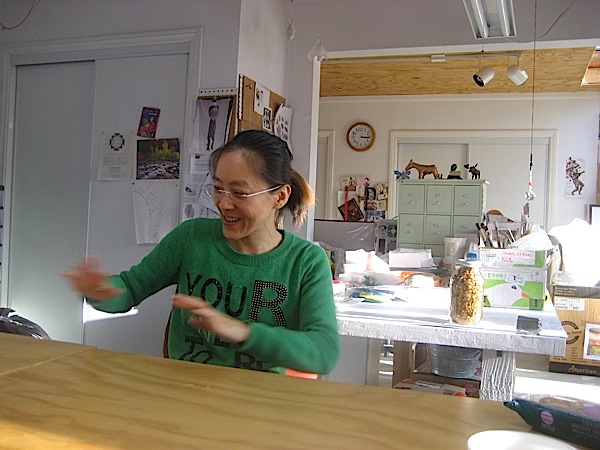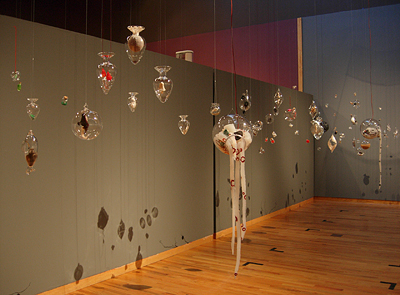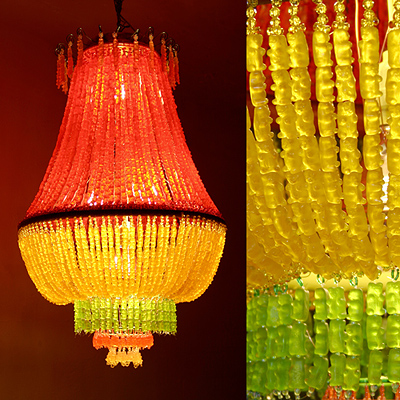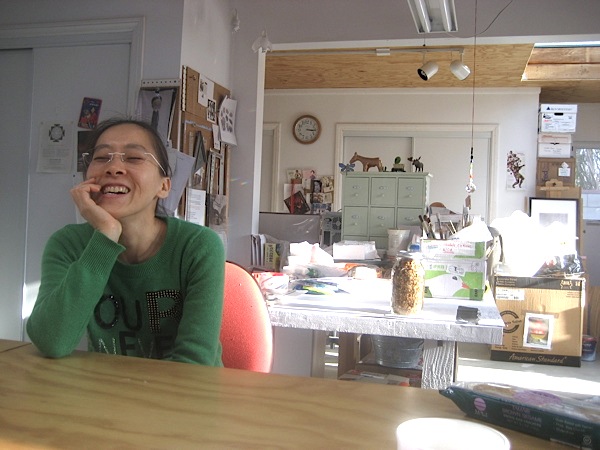
© Copyright 2003, 2012, Windhook®
All rights reserved. |
Skip the chatter & sign me up! |
|

"Great interview! Great guy! Thanks for bringing Jason Kelly into the limelight. I enjoyed all the article and have passed it along to several friends. Well done!" —Lynn |
This month in Outside the linesHere you'll find some snack sized samples of what we wrote in February 2012. Cross-Pollination
We'd like to take a moment here to tell you about one of our subscribers. His name is Jason Kelly, and he publishes a weekly subscription newsletter for investors called The Kelly Letter. Jason's newsletter has been going out to his subscribers for a long time. I'm not sure when it started, but I'm pretty sure it has been hitting the inbox for at least 7 years now. Jason and I got acquainted when we were both technical writers at IBM over a decade ago. We struck up a great and lasting friendship that has flourished despite distance and infrequent crossings of our paths. Jason has lived in Japan since around the time he began writing the Kelly Letter.
Now that you know a little about Jason, I have a confession to make. He has been our role model and one of our inspirations as we have launched Outside the Lines over the past few months. His audience is quite different from ours, but if you were to subscribe to The Kelly Letter, you would immediately notice some remarkable similarities. We use almost the same model for subscriptions, pricing, and structure for our business. We even use some of the same tools and services to make it all happen. In short, we picked his brain and copied much of what he is doing. Recently we talked to Jason, and he offered to show Outside the Lines to his subscribers and his free list. But he asked me to write up a little thing about how I think what we do would be of interest to investment subscribers—something that he could use as a launch point to rewrite and expand for his readers. I love this challenge because it pushes me right out of the box. What would an investor, who studies charts, scours the news for hints about the stock market, and pours over financial reports, and loves doing it all, get out of reading about artists, musicians, writers, and what makes them tick? I had to take a few days to think about this. The answer is rich, but not entirely obvious on the surface. The answer comes in two parts. For starters, no one is one-dimensional. The average investor is in the game for a reason other than the pure joy of analysis and risk/reward adventure that it provides. Yes, investors have to like the game to stay in it, but typically the bottom line is making money. And for most human beings, money is simply a tool for getting where you want to be with your life. The point I am making here, is that the typical investor is as atypical as you or me. They are all different. They want fulfillment and comfort and inspiration in their lives. Some investors are sports enthusiasts, or travelers, or engaged in a hobby or a philanthropic cause, but everyone seeks something that gives them a sense of fulfillment. And yes, some collect art. Some even make art themselves! I know this is true because for several years, I was in the market, and following The Kelly Letter myself. So part one of my answer to Jason's question is that we are all about fulfillment. People work, or invest, or whatever they do to make money, partly for survival, but everybody wants more than that. Everybody wants to seek their dreams. Everybody wants to step outside the lines and walk their own path. We hinted at part two of my answer to Jason's question in last week's note. The topic was the book, Goal-Free Living: How to Have the Life You Want NOW!
The worst thing you can do if you want to be innovative, resourceful, and a leader in your field is to be too narrow in your focus. The most innovative breakthroughs, in any area of endeavor, come when you relax and forget about the stress of getting it right. Shapiro says that expertise is the arch enemy of innovation. And borrowing from one of the NPR articles that Peggy referred to in her piece today, Jonah Lerher talks about the importance that Steve Jobs placed on cross-pollination between people in different disciplines. Lehrer talks at length about how Jobs redesigned the Pixar studios from three buildings in
"... He wanted there to be mixing. He knew that the human friction makes sparks, and that when you're talking about a creative endeavor that requires people from different cultures to come together, you have to force them to mix; that our natural tendency is to stay isolated, to talk to people who are just like us, who speak our private languages, who understand our problems. But that's a big mistake. And so his design was to force people to come together even if it was just going to be in the bathroom." Experts come too quickly to answers based on their training and experience and the conventional wisdom in their field, meaning that an innovation could be right under their nose and go unseen. Shapiro gives the example of a potato chip company that solved a difficult problem not by going to the lab with their potato chip gurus, but by listening to a musician who knew nothing about potato chip technology, but had noticed something interesting when he put a bowl of chips on top of a very loud speaker. I am not suggesting that an investor should abandon the charts and the fundamentals. I'm definitely not suggesting that an investor should come to us for market advice! But I am suggesting that investors, like everybody else, would do well to take a walk in the sunshine. Go to a baseball game. Visit an art gallery. Go out of your way to get acquainted with people in different walks of life—people you wouldn't ordinarily connect with. Push out the boundaries and spend some energy on what really inspires you. In other words, get outside the lines! These are things that I know that Jason frequently encourages his subscribers to do. And they're good advice for all of us! So in conclusion, I guess my answer to Jason, and his subscribers, would be that what we do here at Outside the Lines is cross-pollination. It's a good way to explore your own fulfillment and to keep your thinking fresh and edgy. We're not just another art rag. We are here to support creativity in all its forms. The article above was part of our Outside the lines member's note from Sunday morning, March 25.
To get all the content we send to our members: The Windhook Interview—YaYa Chou
This excerpt is from the first few minutes of the interview, and represents roughly 10% of the material we covered in our conversation. To see the rest of the interview, and all the content we send to our members, you can subscribe here. Michael: You studied at California Institute of the Arts, but before that you came from Taipei? YaYa: Yes. Michael: That's where you were born, and you went to school there. Tell us a little bit about your origins. YaYa: Well, I was a normal Asian kid. I always knew I wanted to be an artist. Michael: That was question number two. YaYa: But I negotiated my way into art school because my family thought you should always go to the regular high school, and the regular university, and then you get to pick what you want after that. So I kind of veered a little bit. I went to the communication department and made film and learned broadcasting. Michael: So communications was your angle to get to film. YaYa: Yeah, it got me a little closer to what I wanted. Peggy: Were there art high schools? YaYa: Yes. For people who want to go to art school at the university level, they usually start when they're 13 in private after-school programs, then they will go to art high schools. But a lot of those are skills building educations, not concept. So they sketch all their life or sculpt and that's how they get in. But academic-wise, they aren't trained that much. So in the last year at my college somehow I found a design studio and asked them to teach me 3-D computer animation, so I learned that on their computers so I could prepare for a portfolio because I needed something to apply for a masters program here. Peggy: When you were in college you knew you wanted to come here for an MFA? YaYa: Yeah, I just knew I wanted to come here and learn something in art. I didn't know if I would have to do another BFA because I didn't have any background but I thought I would give it a try. And Cal Arts has an experimental animation program that doesn't really require you to have formal training. You have to send a demo reel but you don't have to have a lot of sketches or life drawing and stuff like that. So I was really lucky. [Laughter] Peggy: Had you been to Cal Arts before you applied? YaYa: No, my sister was in Manhattan for 10 years, so I was thinking about NYU, but when I applied, they were postponing that program, because they were still trying something new. Savannah Art College in Georgia, wanted me to start with a BFA, but Cal Arts was really my first choice and they took me. Michael: Did you get to go to one of those schools at 13 for artists, or... YaYa: No, every three years we had to pass a national exam to go to regular high school and college. Every year I asked my mom if I can go to art school and she said, "Well, we'll see. If you don't make it to the top four then we'll think about it." But I always scored too high. Peggy: What did your father do? 
YaYa: My father is a retired general. And my mom was a soldier too. But I think he is very artistic. My grandfather was a writer. And my sister is a theater director and playwright. Michael: So it's really a creative family. YaYa: Yeah, it's just that at that time, with the war, there was no way for him to do what he wants so he joined the army to survive. Peggy: He went very far! YaYa: He came from China to go to the war. I'm actually glad they didn't let me go to art school now, actually. After many, many years I was holding that grudge, but now I look back and realize I can always learn how to sculpt or paint but I can never get that critical thinking that I got trained in college. Michael: We were looking over your resume and noticed that you are only about a decade out of art school, and you've got quite a resume. You have some pretty big places that you have shown. You've been at The Museum of Modern Art, and... YaYa: Yeah, that was a show they did for Cal Arts film makers, and my film made it in. So I had to claim that. [Laughter] Peggy: Of course! Michael: Well, your resume shows very nicely. You have some very good places in there. YaYa: You know how the art world works. Like it's just this vanity. Like, "Oh, I'm that girl!" Peggy: But you can say that, because you really were there. YaYa: Who knows what's really important? Michael: Well, I think all resumes in all fields are kind of that way, but we won't tell. That's our secret. And anyway, you really are "that girl!" YaYa: Yeah, everybody tries to fluff it up. Michael: But seriously, you have been in some pretty amazing places. We know a lot of people who have never had an opportunity to show at a place like that. YaYa: I know. I'm really fortunate. Michael: Well, maybe fortunate, but there's got to be something else going on. Do you have any thoughts about what were some of the big breaks that allowed some of these things to happen? YaYa: Hmmm. 
Michael: Sounds like for the Museum of Modern Art it was that you were in the right place at the right time with the school you were in. YaYa: Yeah, and I try to grab whatever opportunity I can. Some things sound really big, and a lot of times they are really conventional, but I never know, so I say as many yeses as I can. A lot of my shows, I don't go out and find galleries. The opportunities came to me. And I don't say no. Even if I have to postpone the exhibition date, I will still say yes and start a conversation right there. Peggy: Was the Fort Wayne Museum of Art show something you submitted, or did they come to you? Where did they find you? 
YaYa: The curator saw my gummy bear chandelier somewhere. I made the first one in '05, and submitted the image to Make magazine's blog. They feature hand made robots and other crazy stuff. I thought, "My stuff can work." So I just sent it to them and overnight it became a big sensation. I got so many interviews, and bloggers reposted the images, and somehow the curator saw it and asked if I would like to have a show. And I said, "Of course!" However, I didn't end up showing my gummy bear work there. I was pretty burned out on that by then. It came early in my career, and I didn't really know what to do with that kind of attention. I didn't want people to think I only make gummy bear stuff. So I intentionally held off for a year not making more of that work. Peggy: And the Montalvo Artist Residency. have you already done one and you are going back? YaYa: No, I got an award this year and I'm going next year. Michael: So it hasn't happened yet. Peggy: How does that work? do you submit, or do you get nominated, or...? YaYa: That's a nomination only. One of my good friends won an award and went there, and she nominated me, and so I applied. OK, I hate to say this but I want to say that I'm good enough, but it turned out that I know someone who works in that residency program. Just to clarify, this person was not on the jury panel who selected me. In the past, I had applied through the Visions from the New California Awards by Alliance of Artists Communities, which selected a few young artists to go, and I didn't make it. I made it to the final round but I didn't win the award. So this is another way to get in. Peggy: But that's fabulous. It's a great spot and a great program. YaYa: I think so. I've never been there. I'll invite you guys over when I go. You will be my guests in the studio. Peggy: We have family near by so we will come see you there. And then the magazines—Sculpture Magazine, Fiber Arts, ArtScene—Oh! Artillery. I didn't notice that one. YaYa: Yeah, Artillery has some freelance writers. It's quite local. A lot of their writers are local, living in LA. But I feel like I have to say something about it. A lot of writers turn into artists nowadays. Who's going to write about us? They start out writing about art and then they say, "Oh god, being an artist is nice!" So everybody's sculpting or painting, and not as much writing. The excerpt above was part of our Outside the lines member's note from Sunday morning, March 4.
To get all the content we send to our members: |

 He's an excellent writer, and brings a personal and human touch to the topic of investing and global finance like no one else I have ever read. This is because he is not your stereotypical investment guru. Jason is a creative, innovative guy with a big heart. I won't spend a lot of time here talking about this, but Jason set up an amazing project in the aftermath of the Fukushima incident last year called
He's an excellent writer, and brings a personal and human touch to the topic of investing and global finance like no one else I have ever read. This is because he is not your stereotypical investment guru. Jason is a creative, innovative guy with a big heart. I won't spend a lot of time here talking about this, but Jason set up an amazing project in the aftermath of the Fukushima incident last year called 

 "Steve Jobs said that creativity is just a matter of having enough dots to connect. Dots, in this context are experiences and ideas. Unfortunately for goal oriented people, ideas come mostly from experiences, and experience comes from living in the present and keeping your agenda open. It does not come from detailed planning. It does not come from too much specialization and narrow expertise. It does not come from a singleminded focus. Plans, and the goals they are designed to meet, are good in small doses, but they are no substitute for the dynamics of living in the moment, with eyes wide open. Even if you are truly a goal person, you will benefit from stepping back, resetting your focus, and letting the stream carry you now and then."
"Steve Jobs said that creativity is just a matter of having enough dots to connect. Dots, in this context are experiences and ideas. Unfortunately for goal oriented people, ideas come mostly from experiences, and experience comes from living in the present and keeping your agenda open. It does not come from detailed planning. It does not come from too much specialization and narrow expertise. It does not come from a singleminded focus. Plans, and the goals they are designed to meet, are good in small doses, but they are no substitute for the dynamics of living in the moment, with eyes wide open. Even if you are truly a goal person, you will benefit from stepping back, resetting your focus, and letting the stream carry you now and then."
 which the various disciplines, computer programmers, cartoonists, and support staff were isolated by discipline, into one huge space where everyone rubbed elbows. He even went so far as to insist that there be only two large central restrooms in the whole building, one for each gender, because he knew that everyone would go there every day.
which the various disciplines, computer programmers, cartoonists, and support staff were isolated by discipline, into one huge space where everyone rubbed elbows. He even went so far as to insist that there be only two large central restrooms in the whole building, one for each gender, because he knew that everyone would go there every day. YaYa Chou is a sculptor, film maker and food activist in Los Angeles. We first met her when she entered
YaYa Chou is a sculptor, film maker and food activist in Los Angeles. We first met her when she entered